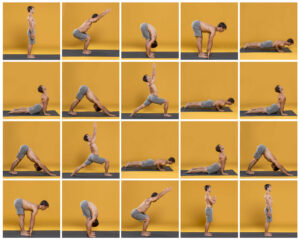Back Pain Relief Sleep Accessories
Hey there! If you’re like many people struggling with back pain, you know how it can turn a good night’s sleep into a distant dream. But fear not! I’m here to guide you through the world of back pain relief sleep accessories. Let’s find you some solutions to ease that pain and grab the restful sleep you deserve.
Understanding Back Pain and Sleep
Back pain and sleep have a complex relationship. Poor sleep can make back pain worse, and back pain can make getting good sleep more difficult. This cycle can be frustrating, but understanding it is the first step towards breaking it. Quality sleep is essential for healing and easing back pain. When we sleep, our body goes into repair mode, healing tissues and muscles. So, if back pain is keeping you from getting restful sleep, it’s not just the discomfort that’s a problem – it’s also the lost opportunity for your body to heal itself.
Furthermore, the way you sleep can directly impact your back pain. Poor sleep posture can strain muscles and spine, leading to or worsening back pain. It’s a two-way street – not only can back pain lead to poor sleep, but poor sleep can contribute to back pain. That’s why it’s crucial to address both issues simultaneously. By creating a sleep environment that supports your back and promotes good sleep, you can start to break the cycle of pain and poor rest.
The Importance of Choosing the Right Mattress
Choosing the right mattress is vital for alleviating back pain. A mattress that’s too soft may cause your spine to fall out of alignment, while one that’s too hard can increase pressure on your back. The ideal mattress should support the natural curve of your spine, allowing it to rest comfortably. It’s about finding that sweet spot between comfort and support. For many people with back pain, memory foam mattresses are a good choice because they contour to the body’s shape, providing both support and relief from pressure points.
However, personal preference and sleeping style also play a big role in what mattress is best for you. It’s important to try out different types of mattresses and see which one feels most comfortable. Don’t rush this process. Spend some time lying on the mattress in the store, or consider a trial period if you’re buying online. Remember, a mattress is an investment in your health and wellbeing, so it’s worth taking the time to choose the right one.
Pillow Selection for Back Pain Relief
Pillows are just as important as the mattress when it comes to relieving back pain. The right pillow can keep your head and neck in alignment with your spine, preventing strain and discomfort. For back sleepers, a pillow that supports the natural curve of the neck is crucial. It shouldn’t be too high or too stiff. Side sleepers, on the other hand, usually need a thicker pillow to keep their head and neck aligned with the rest of their spine. A pillow between the knees can also help maintain spinal alignment and relieve pressure on the lower back.
Moreover, the material of the pillow can affect your comfort and support. Memory foam pillows can mold to the shape of your head and neck, providing consistent support. Latex pillows are another option that offer a firmer support. It’s all about personal preference and what feels most comfortable for your sleeping position and body type. Trying out different pillows and observing how your back feels in the morning can guide you to the best choice for back pain relief.
Mattress Toppers for Extra Support
Mattress toppers can be a great solution for those who aren’t ready to invest in a new mattress but need additional support. They can add an extra layer of comfort and support to your existing mattress. For back pain sufferers, a firm topper can provide the extra support needed to keep the spine aligned. Memory foam toppers are popular as they conform to the body’s shape, offering both support and pressure relief.
When selecting a mattress topper, consider the thickness and the material. A thicker topper will provide more cushioning, which can be beneficial for those with back pain. However, too thick might mean less support, so finding the right balance is key. The goal is to enhance your sleeping experience without compromising the support your body needs.
Adjustable Beds: A Game Changer
Adjustable beds can revolutionize sleep for those with back pain. By allowing you to adjust the position of your head and feet, these beds can help reduce pressure on your back. This customization can be particularly beneficial for people with specific back conditions like sciatica or herniated discs. Being able to elevate your head and knees slightly can take the pressure off your lower back, providing significant relief.
Additionally, adjustable beds offer the flexibility to change positions easily throughout the night. If you wake up feeling uncomfortable, you can adjust the bed with the push of a button. This ease of adjustment can help you find the most comfortable position for a good night’s sleep, and thus, a reduction in back pain over time. While adjustable beds are an investment, for many people with chronic back pain, the benefits far outweigh the cost.
Sleep Position and Back Pain
The way you sleep can significantly impact your back pain. For instance, sleeping on your back is often recommended as it helps maintain the natural curve of your spine. Using a pillow under your knees can enhance this position by reducing stress on your lower back. However, not everyone finds back sleeping comfortable, and that’s okay. Side sleepers can benefit from placing a pillow between their knees to keep their hips balanced and spine aligned. This simple adjustment can make a big difference in reducing back strain.
Stomach sleeping, though, can be tricky for those with back pain. This position can put undue stress on your neck and lower back. If you can’t break the habit, try placing a thin pillow under your pelvis to alleviate some of the pressure on your back. Remember, the best sleep position is one that you find comfortable and that doesn’t exacerbate your back pain. Experiment with different positions and use pillows strategically to find what works best for you.
Heating Pads and Cold Packs
Heat and cold therapies can be effective in managing back pain, especially when it comes to preparing for sleep. A heating pad used before bed can relax your back muscles, reducing tension and pain. The warmth improves circulation, which aids in the healing process and provides a soothing sensation, helping you to unwind before sleep. Just be sure to use the heating pad safely, avoiding direct contact with the skin for prolonged periods to prevent burns.
On the other hand, cold packs can be used to reduce inflammation and numb sore areas. They are particularly useful if your back pain is due to a recent injury. The cold helps to reduce swelling and dulls pain, providing relief. It’s usually best to use cold therapy for short periods, like 15-20 minutes, as prolonged exposure can be uncomfortable and less effective. Alternating between heat and cold therapy can also be beneficial, depending on the nature and cause of your back pain.
Lumbar Support Pillows
Lumbar support pillows can be a game-changer for people with back pain, especially when it comes to sleep. These pillows are designed to support the natural curve of your lower back, providing relief and comfort. By filling the gap between your back and the mattress, they help maintain proper spinal alignment. This can be particularly helpful for back sleepers, as it prevents the lower back from sinking into the mattress, which can exacerbate pain.
For side sleepers, a small lumbar pillow can also be effective when placed between the waist and the mattress. It provides the extra support needed to keep the spine aligned in this position. The key is to choose a lumbar pillow that’s the right size and firmness for your body and your bed. A pillow that’s too large or too firm can be just as detrimental as no support at all, so it might take some trial and error to find the perfect fit.
Stretching and Relaxation Before Bed
Incorporating stretching and relaxation techniques into your bedtime routine can have a profound impact on your sleep quality and back pain. Gentle stretching can help loosen tight back muscles, reducing pain and discomfort. Focus on slow, steady stretches that target the back, hips, and legs. This not only relieves muscle tension but also prepares your body for rest, signaling that it’s time to wind down.
Relaxation techniques like deep breathing or progressive muscle relaxation can further enhance your bedtime routine. These practices help calm your mind, reducing stress and tension that can exacerbate back pain. By creating a peaceful and relaxed state of mind, you can fall asleep more easily and enjoy a deeper, more restorative sleep.
Sleep Trackers: Monitoring Your Sleep Health
Using a sleep tracker can provide valuable insights into how your back pain is affecting your sleep. These devices track various aspects of your sleep, such as duration, quality, and sleep stages. By monitoring your sleep patterns, you can identify correlations between your sleeping habits and back pain. Perhaps you’ll notice that your pain is worse after nights of poor or disrupted sleep, indicating a need to adjust your sleep environment or habits.
Furthermore, sleep trackers can help you maintain a consistent sleep schedule, which is crucial for managing back pain. Going to bed and waking up at the same time each day helps regulate your body’s internal clock, leading to better sleep quality. Consistent, restorative sleep can play a significant role in reducing chronic pain, including back pain.

Source: Image by Freepik
The Role of Diet and Hydration in Sleep
What you eat and drink can affect your sleep and, in turn, your back pain. A balanced diet rich in anti-inflammatory foods can help reduce inflammation and pain. Foods like leafy greens, fatty fish, nuts, and berries are known for their anti-inflammatory properties. On the other hand, consuming large meals or spicy foods close to bedtime can disrupt your sleep, potentially worsening back pain.
Hydration is also crucial for back pain sufferers. Dehydration can lead to muscle cramps and stiffness, exacerbating back pain. Ensure you’re drinking enough water throughout the day, but try to limit fluid intake right before bed to avoid disruptive nighttime bathroom trips. Balancing your diet and hydration can be a simple yet effective way to improve your sleep and reduce back pain.
Yoga and Meditation for Sleep
Yoga and meditation can be incredibly beneficial for those suffering from back pain and sleep issues. Gentle yoga poses can stretch and strengthen your back, reducing pain and improving mobility. Yoga also promotes relaxation and stress relief, which can help improve sleep quality. Even a short session before bed can make a difference.
Meditation, particularly mindfulness meditation, can help manage the emotional aspects of living with chronic pain. It encourages a focus on the present moment, helping to reduce stress and anxiety that can interfere with sleep. Regular meditation practice can improve your overall sleep quality, making it easier to cope with back pain.

When to See a Doctor
While many cases of back pain can be managed with the right sleep accessories and lifestyle changes, it’s important to know when to seek medical advice. If your back pain is severe, persistent, or accompanied by other symptoms like numbness or tingling, it’s time to see a doctor. Also, if your back pain is the result of an injury or if it’s worsening despite your efforts to alleviate it, professional medical evaluation is necessary.
A doctor can diagnose the underlying cause of your pain and recommend appropriate treatments, which might include physical therapy, medication, or in some cases, surgery. Don’t hesitate to seek medical help if your back pain is affecting your quality of life or if you have any concerns about your symptoms. Remember, timely intervention can prevent further complications and help you return to a comfortable, pain-free life.




